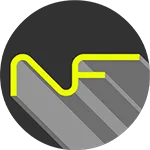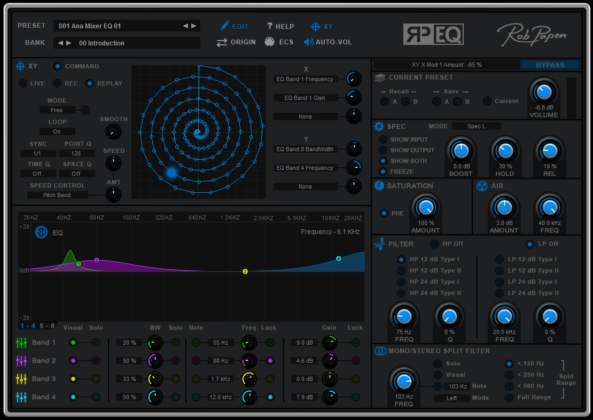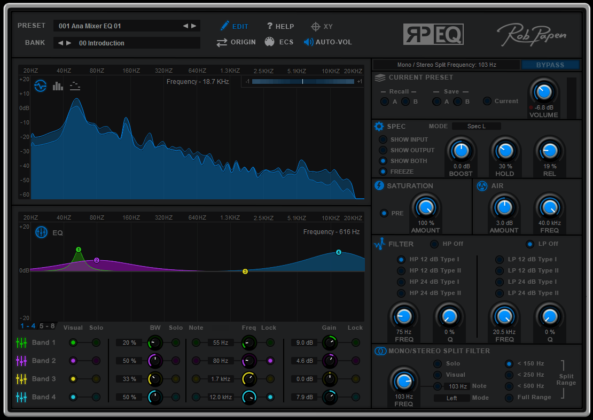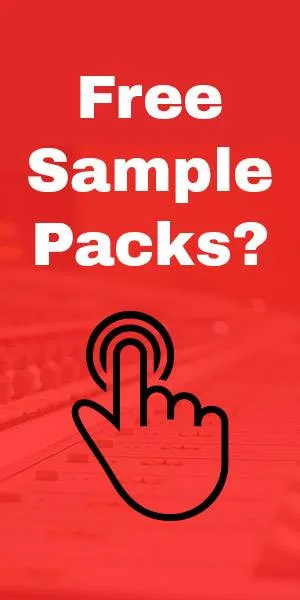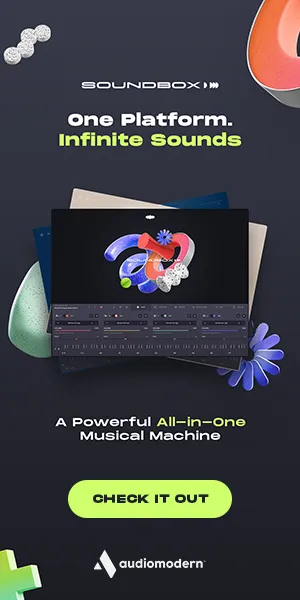28. September 2015 | News | Noizefield
News: Rob Papen – RP EQ (Plus Give Away)

Today Rob Papen announced the release of RP EQ, a very flexible and great sounding EQ plug-in. Here in Noizefield headquater we had the great opportunity to do an exclusive interview with Rob Papen. Check out the interview and don´t miss the chance to win one of two copies of RP EQ!!!
RP EQ Description:
In the virtual music world there are a countless number of different EQs available…so why another one? Well, Rob Papen is all about sound and he was convinced he could add something special to the EQ plugins.
When you first open RP-EQ in your DAW software you will see that it is far from a basic bread-and-butter equalizer.
Unique elements were added to the core equalizer unit. The toolbox includes a Mid/Side equalizer mode and Mono/Stereo split filter which is used frequently in modern EDM/Dance music styles.
The Air section is fantastic on your master channel and the proven X/Y Pad adds a dynamic and creative edge to an already very musical RP-EQ.
In true Rob Papen style, RPEQ comes with many great presets to get you started and with the ‘sound’ of RP-EQ you will have a great go to plug-in for your top notch music productions!
RP EQ Features:
- PC: 32 & 64 bits VST, *AAX for Windows Vista / Windows 7/ Windows 8/ **Windows 10
*AAX for Pro Tools 12 or higher
** check first if your music host program is compatible with Windows 10
Note: Minimal 1000pixel high screen resolution is needed for RP-EQ. - Mac: 32 & 64 bits AU, VST and AAX, for OSX 10.6 or higher
Note: Minimal 1000pixel high screen resolution is needed for RP-EQ.
- Presets & Banks
Several banks with presets, selectable in the upper screen section - Current Presets A /B
A Preset in RP-EQ has two slots, A and B, to store two variations of the Preset. The Aand B variations are useful to compare different versions while you are editing. Thecurrent, live, settings can be recalled at any time via the Current button
-
Volume
Volume control with in the uppers section the ‘on/off’ option for ‘volume correction’ if volume goes over 0dB.
Bypass button to hear the difference between the ‘original’ signal and ‘RP-EQ’ signal. - Spectogram
The RP-EQ spectrogram displays the input and output signal as an FFT Spectrogram, a 30 band (1/3 octave) Bar Spectrogram or a 30band (1/3 octave) Single line Spectrogram. The icons on the left hand side of the Spectrogram display switch the display mode between FFT Spectrogram, BarSpectrogram and the Single Line Spectrogram.
Controls for ‘Hold’ and ‘Release’ of the peak lines in Bar mode. Control of ‘Release’ in the Single Line mode.
Display mode of: Left, Right, Stereo or Mid/Side
Additional ‘gain’ boost control. -
EQ
8 band EQ which can work in normal mode or Mid/Side mode.
In Mid/Side mode, the Bands 1-4 are for the ‘Mid’ signal and Bands 5-8 for the ‘Side’ signal.
Graphic control panel and lower control panel with additional setting options for view , solo or lock a single band. - Saturation
The Saturation section applies a warming effect to the sound, based on the effect of saturated analogue tape recordings.
- AIR
The Air section represents an additional EQ band, which works as a booster of very high frequencies with a wide bandwidth.
Its effect is perceived as giving the audio a bit more breathing space or Air. - Filter
A typical application of this filter section is to use the HP filter with a setting of 75 Hz tofilter out any rumble or otherwise uncontrolled low-end material. The slope of thefilters is selectable between 12 dB and 24 dB per octave and each filter comes in twofilter types.A LP filter is a classic ingredient of any synthesizer set-up and we have added one inRP-EQ to enhance the creative application of equalisation. In combination with the XYpad, the Filter section is the place to start for dynamic and rhythmic filter effects.
-
Stereo/Mono Split Filter
The Mono / Stereo Split Filter is able to divide the audio signal in a mono and stereo partbased on a frequency. Typically, low frequencies do not contain much spatial informationand are perceived as mono signals. Spatial placement in a stereo image is provided by thehigher frequencies. The Split Filter is a great tool for contemporary music in a mix-busconfiguration or for mastering.The signal post the Split Filter consists of two parts that can be processed separately: alower frequency mono component and a higher frequency stereo component. -
XY section
The XY Screen works as two programmable LFOs. Movement in each direction directly controls the value of one or more RP-EQ parameters.XY basics – Live / Record / ReplayIn Live mode you move the blue dot manually across the XY pad (use the mouse to clickand drag). The position of the mouse and your dragging skills determine the X and Yvalue. You can also record movements on the XY pad as paths. Switch XY to Rec mod and drawa path. For as long as you keep the mouse button pressed, RP–EQ will capture allmovements as a path in its memory. After recording, the path is ready for playback. Switch to Replay mode, and play a note.You will see the XY indicator move across the screen according to previously recordedpath. The path is saved as part of the Preset, and is ready to go when you recall thePreset.Instead of playing a note to trigger the path playback, the path can also be made to runfreely, or triggered manually by clicking the button adjacent to the mode Switch.
Checkout the RP EQ Video
More information: Rob Papen / RP EQ
